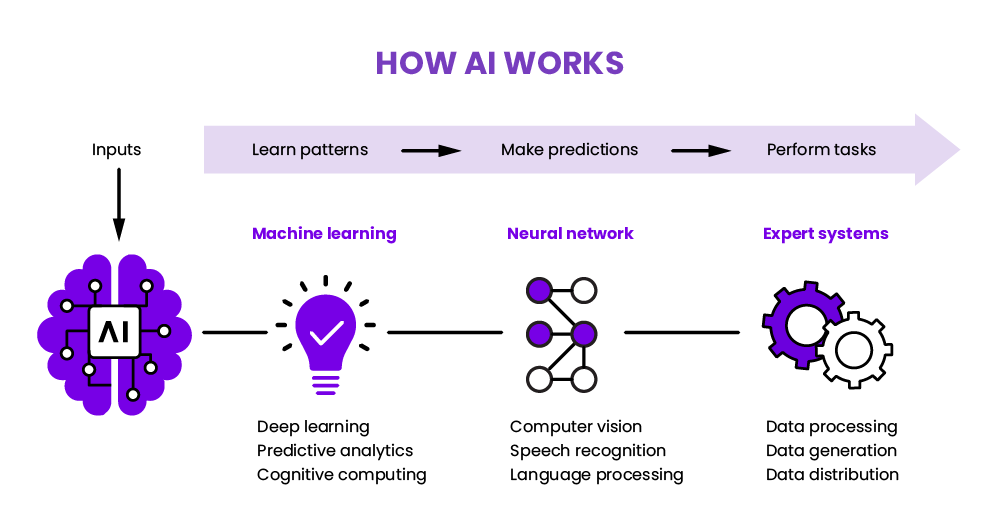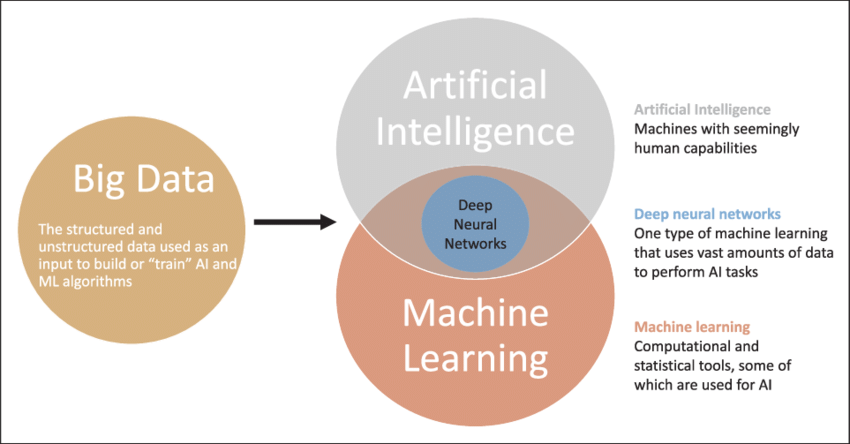How does AI process information ?

Artificial intelligence (AI) plays a critical role in transforming how we analyze and handle data across various industries. Understanding how AI processes and interprets information provides valuable insights into its capabilities and challenges. This article explores the key stages, technologies, and applications of AI-driven data analysis, including how it answers questions and interprets information to enhance decision-making and efficiency.
Understanding the basics of AI data processing
AI data processing is essential for transforming raw data into actionable insights. It enables machines to make predictions, automate decision-making, and improve processes across industries. From healthcare diagnostics to autonomous driving, AI continues to revolutionize how we process information.
What is artificial intelligence ?
Artificial intelligence (AI) refers to the simulation of human intelligence in machines programmed to think, learn, and make decisions like humans. These systems are designed to handle large volumes of information, recognize patterns, and make predictions without direct human intervention.
AI is utilized across a wide range of industries, including healthcare, finance, retail, and autonomous transportation.
Types of AI and their capabilities
AI can be classified into several types based on its functionality:
- Narrow AI: Specialized systems designed to perform specific tasks (e.g., virtual assistants like Alexa).
- General AI: Hypothetical machines capable of performing any intellectual task a human can do.
- Super AI: A future concept where machines surpass human intelligence, still in the realm of speculation.
Try Wiseone for free with a 7-day pro trial
no credit card required
The step-by-step process of how machines handle data with AI
AI systems transform raw data into actionable insights through a structured, multi-stage process. Each stage is critical to ensuring the accuracy, reliability, and effectiveness of the AI model. Below is a detailed breakdown of the process:
Data collection and preparation
Data is the foundation of any AI model. It involves gathering relevant datasets and cleaning them to remove inconsistencies and errors. Proper data preparation ensures more reliable outcomes.
Model and algorithm selection
Choosing the right algorithm depends on the problem being solved. Whether it’s classification, clustering, or prediction, selecting an appropriate model is a crucial step.
Training the model
This phase involves feeding the algorithm with data to teach it how to make predictions or decisions. By adjusting parameters, the model improves its accuracy over time.
Validation and testing
Once trained, the model is tested on unseen data to assess its performance. This ensures the system generalizes well to real-world scenarios and doesn’t just memorize training examples.
Summary of the AI data handling process
-
Data Collection and Preparation: Gather, clean, and structure data.
-
Model and Algorithm Selection: Choose the right tools for the task.
-
Training the Model: Teach the model using training data.
-
Validation and Testing: Ensure the model performs well on new data.
-
Deployment and Monitoring: Deploy the model and maintain its performance over time.

Core learning techniques in machine learning
Machine learning, a subset of AI, involves different learning approaches for developing predictive models:
Supervised learning
In supervised learning, the algorithm is trained on labeled data. This approach is commonly used for tasks such as fraud detection or speech recognition.
Unsupervised learning
Here, the system identifies patterns and relationships within data without predefined labels. It is used for tasks like clustering and anomaly detection.
Reinforcement learning
In reinforcement learning, the model learns by trial and error, receiving rewards for favorable outcomes. It is widely applied in robotics and game development.
Key technologies behind AI-based data analysis
Neural networks
Inspired by the human brain, neural networks enable AI to recognize complex patterns in data and form the backbone of many AI models.
Deep learning
A more advanced form of neural networks, deep learning utilizes multiple layers to process vast amounts of data. It excels in tasks like image recognition and speech processing.
Natural language processing (NLP)
NLP enables machines to understand, interpret, and respond to human language. It is used in applications such as sentiment analysis, virtual assistants, and language translation tools.
Computer vision
This field of AI allows machines to interpret and analyze visual data, powering facial recognition systems and autonomous vehicles.
Practical applications of AI-powered systems
AI-powered systems are transforming industries through data-driven decision-making and automation:
Recommendation engines
E-commerce and streaming services rely on recommendation algorithms to suggest products or content based on user behavior.
Business analytics
AI tools help organizations extract actionable insights from large datasets, enabling smarter decisions and more efficient operations.
Medical diagnosis
In healthcare, AI models assist in analyzing medical images and patient records to help doctors make accurate diagnoses and recommend treatments.
Autonomous vehicles
Self-driving cars rely on AI to process sensor data, enabling them to navigate, avoid obstacles, and make real-time decisions.
Join the Wiseone community
They’re talking about us on social media.
Challenges and ethical considerations in AI systems
Despite its advantages, AI comes with its own set of challenges and ethical concerns.
Data quality and bias
AI models can produce biased results if they are trained on incomplete or skewed datasets. Ensuring high-quality data is essential for fairness and accuracy.
Model transparency
Complex models like deep neural networks are often seen as “black boxes,” making it difficult to explain how they arrive at certain decisions. Transparency is vital, especially in sensitive sectors like finance and healthcare.
Privacy and security risks
AI systems often process large amounts of personal data, raising concerns about user privacy and data security. Ensuring compliance with regulations like GDPR is crucial.
FAQ on AI Information Processing
How does artificial intelligence process information?
Artificial intelligence processes information by collecting data, analyzing it, identifying patterns, and making decisions based on learned models. This involves several steps: data collection, model selection, training, and validation to ensure the output is accurate and reliable.
What are the 4 steps of the AI process?
- Data Collection and Preparation: Gathering and cleaning relevant data for training.
- Model and Algorithm Selection: Choosing the best algorithm for the specific task.
- Training the Model: Feeding data into the algorithm to improve accuracy.
- Validation and Testing: Testing the model on new data to ensure it generalizes well.
How is AI used in data processing?
AI automates data processing by quickly analyzing large datasets, identifying patterns, and generating insights. It’s widely used in business analytics, medical diagnosis, customer recommendation systems, and financial forecasting.
How do artificial neural networks process information?
Artificial neural networks process information by simulating the human brain. They consist of interconnected layers of nodes (neurons) that transform input data through weighted connections, extracting patterns and making predictions based on the learned relationships.